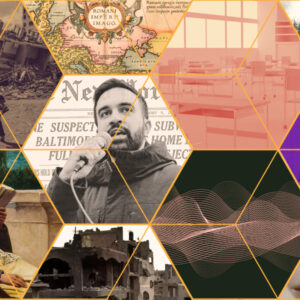
How the Oslo Accords Fragmented Palestine and Uprooted a People
Revisiting a Turning Point in the History of Israel’s Occupation
“Tell no lies. Expose lies whenever they are told. Mask no difficulties, mistakes, failures. Claim no easy victories.”
–Amílcar Cabral, Tell No Lies, Claim No Easy Victories
*Article continues after advertisement
From the foundational moment of the Nakba—the ethnic cleansing of upwards of three-quarters of the Palestinian population during 1947-48—Palestinians have endured uprooting, fragmentation, and dispersal.
This enduring reality has scattered Palestinians across numerous territories and political jurisdictions, illustrated in the various categories used to describe the Palestinian people: Palestinian refugees (now the largest body of refugees in the world); Palestinians who remained on their land in 1948 and later became Israeli citizens; the fragmentation of the West Bank into isolated cantons; the separation of the West Bank and Gaza Strip; and the division of Jerusalem from the West Bank.
This fragmented existence is a direct outgrowth of the logics of settler colonialism. Much like the South African Bantustan model—which itself was inspired by nineteenth-century Canadian policies towards Indigenous peoples—Israeli settler colonialism has sought to weaken any sense of Palestinian collective identity, splintering the population across a patchwork of discrete and separated territories.
Resistance to this process of fragmentation has been a constant theme of Palestinian politics, with a deep insistence by the Palestine Liberation Organization for most of its history that Palestinians share a common national struggle (underlined by the Right of Return of Palestinian refugees), regardless of where they may be located.
But one of the consequences of this ongoing territorial fragmentation has been the creation of distinct Palestinian social formations, each with their own specific forms of economic existence and governance, class hierarchies, and political institutions. Understanding the ways these social formations have evolved—and their connections to capitalism in both Israel and across the wider region—is fundamental to unpacking the regional trajectories of the last two decades.
This fragmented existence is a direct outgrowth of the logics of settler colonialism.
A key part to this story is the Oslo Accords, an agreement signed between the PLO and the Israeli government in 1993. Oslo led to the establishment of the Palestinian Authority, a political leadership that has supplanted the PLO, and is now headquartered in the town of Ramallah, in the West Bank.
The PA—led for nearly two decades by the eighty-nine-year-old Mahmoud Abbas (Abu Mazen)—is widely derided by most Palestinians. It continues to collaborate directly with the Israeli occupation, including facilitating the arrest of activists by Israeli military forces.
Nonetheless, as an institution, the PA is heavily promoted (and funded) by leading Western and Arab states as the sole address for Palestinian political decision-making. As such, it is necessary to review how the PA came into being, and its deep connection to the social transformations that have taken place in the West Bank and Gaza Strip since 1967.
*
With the military occupation of the West Bank and Gaza Strip in 1967, Israeli political leaders held two counterposed perspectives on what to do with the newly conquered territories. Some Israeli leaders advocated incorporating these areas into Israel, viewing them as an indivisible part of the so-called Zionist homeland.
Others, however, opposed this, fearing that it would mean extension of citizenship to Palestinians in the West Bank and Gaza Strip, potentially undermining the majority-Jewish character of the Israeli state. This second perspective eventually won the debate, and a military government was established that would come to control every aspect of life in the occupied territories without extending citizenship to their Palestinian inhabitants (unlike those Palestinians who remained in what became Israel after 1948).
Instead, Palestinians in the West Bank and Gaza Strip carried ID cards and were subject to Israeli military law. The military governor, a high-ranking officer in the Israeli military accountable only to the prime minister, would be the final arbiter regarding all decisions in the territories.
Closely related to such demographic debates was the question of land. Immediately after the 1967 occupation, Israel began to confiscate Palestinian land and build Israeli-only settlements in areas from which Palestinians had been expelled during the war (in the West Bank, for instance, about twenty per cent of the Palestinian population were driven off their lands in 1967).
This project was codified in the Allon Plan, named for Yigal Allon, an Israeli general and deputy prime minister from the Israeli Labour Party following 1967. Allon sought to locate Israeli settlements between major Palestinian population centers and on top of aquifers and fertile agricultural land.
In the classic style of colonial conquest, this seizure of fertile land and water made Palestinians almost completely dependent on Israeli food imports. In the case of the West Bank, it also enabled Israel to expropriate large quantities of water for use inside Israel proper (by the late 1970s, this was equivalent to about one-third of Israel’s water consumption).
Such destruction of agricultural life—and the overall conditions of social existence in the West Bank and Gaza Strip—meant that Palestinian markets were increasingly integrated into the much larger Israeli economy. Local industries were weakened as Israeli produced foods and manufactured goods flooded Palestinian areas.
Industrial activities that did emerge, such as textiles and leather, were usually subcontracted from Israeli companies and concentrated in very small workshops of fewer than five people. Some Palestinian merchants were granted rights to distribute Israeli-produced commodities in the occupied territories, but these were typically individuals who also collaborated politically with the Israeli military. Others worked as labour subcontractors, earning commission by providing Israel with a daily supply of Palestinian workers.
Alongside such economic dependency, a complex military-bureaucratic apparatus emerged that tied a layer of Palestinians to the Israeli military occupation. Israel’s aim here was to present a Palestinian face to the occupation, and various institutions were set up to achieve this goal. For instance, in 1981, Israel established the Civil Administration, which employed thousands of Palestinians as frontline police in Palestinian cities and villages in the West Bank and Gaza Strip.
In the West Bank, Israel attempted to set up a network of so-called Village Leagues as an alternative to the outlawed Palestine Liberation Organization (at the time, the PLO operated mostly outside of the country, and had oriented towards a Palestinian-led struggle in the wake of the defeats suffered by Arab nationalist movements in 1967).
Nonetheless, despite Israel’s attempt to promote such institutions, they were widely rejected. Village League representatives were assassinated by activists, and most of the Palestinian population continued to regard the PLO (and the various political factions that constituted it) as their sole legitimate representative, despite its illegality.
All these developments had a profound effect on both Israeli and Palestinian capitalism. For Israel, the occupied territories significantly increased the size of Israel’s domestic market, providing a captive consumer base and a source of cheap and highly exploitable labor.
Commuting daily into Israel to work in sectors such as construction, agriculture, and industry, Palestinians filled the lowest rungs of the Israeli labor market and covered some of the labour shortfall caused by prolonged military service for the Jewish citizens of Israel. Through the 1970s, this labor helped underpin an economic expansion in Israel that was dubbed the “Palestinian boom.”
By the mid-1980s, Palestinians from the occupied territories made up some seven per cent of the Israeli labour force. Roughly one-third of the West Bank labour force worked in Israel in 1985,9 with around half this number employed in the construction industry—a vital sector for the large business conglomerates that sat at the heart of the Israeli economy.
The integration of Palestinian labour into the Israeli economy not only served Israel’s economic needs, but further solidified Israel’s control over the West Bank and Gaza Strip by making Palestinian livelihoods dependent upon access to employment in Israel.
For Palestinians, such changes meant that a generation of youth became wage earners with independent sources of income for the first time. In the West Bank, which had been largely rural-based when it was ruled by Jordan between 1948 and 1967, Palestinian society became much more proletarianized and urban over the 1970s and 1980s. The hierarchical and traditional structures of rural life began to erode.
Such changes were reinforced by the growth of the Palestinian national movement outside the country—most notably the Palestinian resistance movements that had shaken Jordan’s Hashemite monarchy through the 1970s, and then fought the Israeli occupation and its domestic collaborators in Lebanon. Palestinian political factions transmitted this politicized atmosphere to the West Bank and Gaza Strip, particularly among the generation attending university for the first time.
As part of this resurgence of the national movement, the leading Palestinian parties that made up the PLO—including Fatah, the Popular Front for the Liberation of Palestine (PFLP), the Democratic Front for the Liberation of Palestine (DFLP), and the Palestine Communist Party (PCP), extended their political networks throughout the West Bank and Gaza Strip—organizing in universities, schools, and labour unions.
These activities helped politicize a new generation of youth and forced activists to confront important and practical questions around how to meaningfully organize on day-to-day issues in a situation of prolonged military occupation. However, organizing tended to be highly factionalized and driven by differing orientations towards the national struggle and key strategic political debates.
These social changes were important factors underlying a popular mass revolt that first erupted in the Gaza Strip on 8 December 1987. Described as the First Intifada (literally, “shaking off”), this uprising lasted into the early 1990s and was a historic turning point in the Palestinian struggle.
Israel’s initial response was characteristically violent, with the then defense minister Yitzhak Rabin calling on the military to “break the bones” of stone-throwing youths. Israeli soldiers and civilians killed around 1,500 Palestinians, including an estimated 300 children through the years of the uprising, with thousands more suffering severe injuries. Tens of thousands of Palestinians were imprisoned without charge or trial.
Alongside such military repression of the uprising, Israel also introduced a range of new bureaucratic methods aimed at controlling how Palestinians could move around the West Bank and Gaza Strip. This included the widespread deployment of curfews, zoning restrictions, and the use of permits, passes, and military checkpoints to control entry and exit from Palestinian areas.
By February 1988, travel between the West Bank and Gaza Strip had become almost impossible due to Israeli restrictions. On 15 and 17 March 1988, these restrictions were officially codified in two Israeli military orders that prevented movement between the two areas.
In 1989, for the first time, colored ID cards were issued to Palestinians in the West Bank and Gaza Strip that indicated whether the bearer was a former political prisoner or considered politically active. This allowed soldiers to immediately identify and restrict the movement of activists.
In the Gaza Strip, a regulation was passed on 15 May 1989, requiring magnetic ID cards for Palestinians wanting to enter Israel for work. All these various institutional innovations laid the basis for the pass system that developed through the 1990s and 2000s, fully controlling not only passage between the West Bank and the Gaza Strip but also the ability of Palestinians to move inside these territories.
This pass system mirrors bureaucratic and racialized mechanisms that have been similarly deployed by other settler-colonial states—such as the US, Canada and South Africa—to control the movement of Indigenous populations.
*
The First Intifada came to an end with the Oslo Accords. Officially known as the Declaration of Principles on Interim Self-Government Arrangements, this agreement was signed between the Palestine Liberation Organization (PLO) and the Israeli government under the auspices of the U.S. in September 1993.
In the celebratory pronouncements of the time, Oslo was heavily promoted as a “peace process”—hailed as bringing “an end to decades of confrontation and conflict,” enabling the recognition of ‘mutual legitimate and political rights’, and achieving “peaceful coexistence and mutual dignity and security and…a just, lasting and comprehensive peace settlement.”
In reality, Oslo built heavily upon Israel’s strategic logic since 1967, which sought to cultivate a Palestinian leadership that would administer “self-rule” in the West Bank and Gaza Strip on behalf of Israel. Within the Oslo Accords framework, this was to take place under the leadership of members of the PLO, who returned from exile proclaiming that a Palestinian state would soon be established in the West Bank and Gaza Strip.
The returning PLO cadre helped to constitute the Palestinian Authority (PA), a Palestinian government with limited powers that were elaborated in Oslo and other agreements signed during the 1990s.
Oslo divided the West Bank into Areas A, B, and C. The PA was given autonomy in Area A, at that stage constituting around three per cent of the West Bank and home to twenty per cent of the Palestinian population. Another seventy per cent of the Palestinian population lived in Area B, comprising twenty-four per cent of the West Bank, over which the PA and Israel shared joint authority. Israel fully controlled Area C, with more than seventy per cent of the territory.
Through this division, the Oslo Accords and subsequent agreements essentially transferred frontline responsibility for Israeli security to a Palestinian proxy, in this case the PA, while all strategic levers, particularly economic ones, remained in Israeli hands.
The means of this control had been largely set out in the preceding decades. While illegal Israeli settlements were designated a “final status” issue under Oslo, to be negotiated over a longer period, the Israeli government launched a massive settlement expansion immediately after signing the accords, by offering large economic incentives for Israeli settlers to relocate to the West Bank and Gaza Strip.
The number of settlers doubled between 1994 and the beginning of the 2000s. Focusing on strategic locations such as hill-tops and water aquifers, large settlement blocs cut across the West Bank, preventing the natural growth of Palestinian population centers. The settlements were to be connected by another Oslo-era innovation, the so-called bypass roads, restricted access highways that connect settlement blocs with one another and with Israeli cities.
Likewise, the entry and exit of goods and people from the Gaza Strip came under Israeli control.
The net effect of these measures meant that the 90 per cent of the Palestinian population living in Areas A and B in the West Bank were confined to a patchwork of isolated enclaves, with three main clusters in the northern, central, and southern sections of the territory, separated from one another by settlement blocs.
Travel between these areas could be shut down at any time by the Israeli military using checkpoints and military personnel. All entry to and from Areas A and B, as well as the determination of residency rights in these areas, were under Israeli authority.
Likewise, access to Jerusalem was progressively cut off from surrounding Palestinian areas. This was significant not simply for religious reasons, but because Jerusalem had long served as a primary market, employment centre, and node of financial and commercial activity for the West Bank.
To achieve this separation, Israel built a ring of Israeli-only settlements and roads surrounding Jerusalem. It also deployed a familiar combination of physical and bureaucratic means, including the construction of permanent checkpoints, the use of special permits, and, later, a sprawling concrete wall dubbed the Apartheid Wall that restricted Palestinian access to the city.
This spatial fragmentation was further reinforced through infrastructure development, which served to solidify Israeli control. The electricity sector remained almost entirely dependent on the Israeli Electric Corporation, with Palestinian providers forced to act primarily as payment collectors rather than independent utilities, and new electricity infrastructure projects requiring Israeli approval.
Similarly, telecommunications, including internet connectivity, was constrained by Israeli control over electromagnetic space and physical networks: Palestinian internet traffic was routed through Israeli servers, and the installation of telecommunications infrastructure required permits that were often delayed or denied.
This system of managed dependence extended to all resources: Israel controlled the vast majority of aquifers, all underground resources, and all air space. Whereas Israel used close to 500 million cubic meters of water annually by the late 1990s, Palestinians in the West Bank used only 105 million. A similar structure existed in the Gaza Strip, with the PA given “autonomy” and Israel retaining control over settlements and military bases. Permits were even required for Gazan fisherfolk to use the sea.
Likewise, the entry and exit of goods and people from the Gaza Strip came under Israeli control. Movement between Gaza and the West Bank was made virtually impossible, with Israel rendering the two areas separate entities. Rather than creating the foundations for an independent Palestinian state, these Oslo-era economic and infrastructural arrangements created a system where Palestinian development remained fundamentally tied to and constrained by Israeli oversight and approval mechanisms.
Underpinning these overt forms of Israeli control, the means of repression in the West Bank and Gaza Strip were subcontracted to the newly formed Palestinian Authority. The PA security forces, funded and openly trained by Western military and intelligence agencies, received the largest component of the Palestinian budget. Money went to the training of new Palestinian police and intelligence forces as well as the construction of new prisons.
Since the signing of Oslo through to the current moment, these Palestinian security forces remain in constant communication with the Israeli military, and at times of heightened political upheaval in the West Bank (for instance, since October 2023) have worked to facilitate the entry of Israeli soldiers into Palestinian towns and villages for the purposes of arresting or assassinating activists.
______________________________

Resisting Erasure: Capitalism, Imperialism, and Race in Palestine by Adam Hanieh, Robert Knox, and Rafeef Ziadah is available via Verso.












